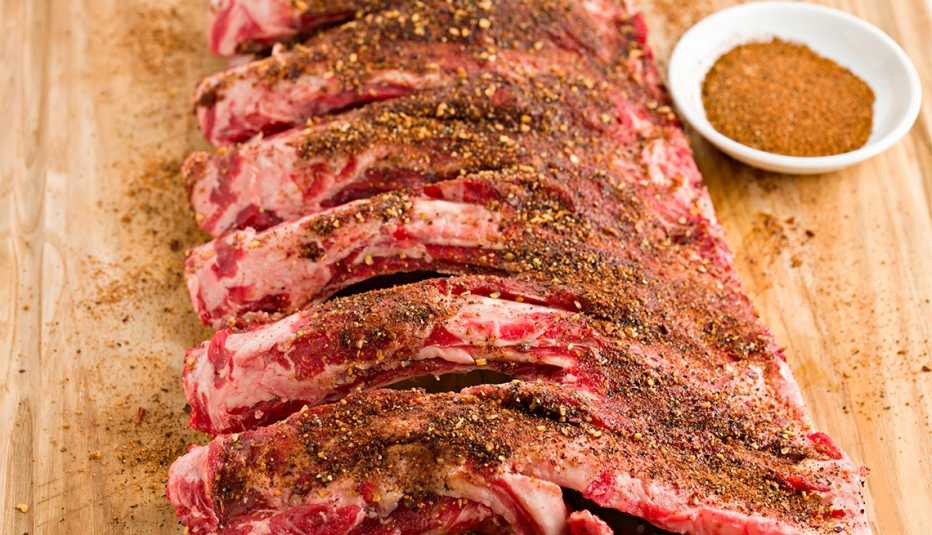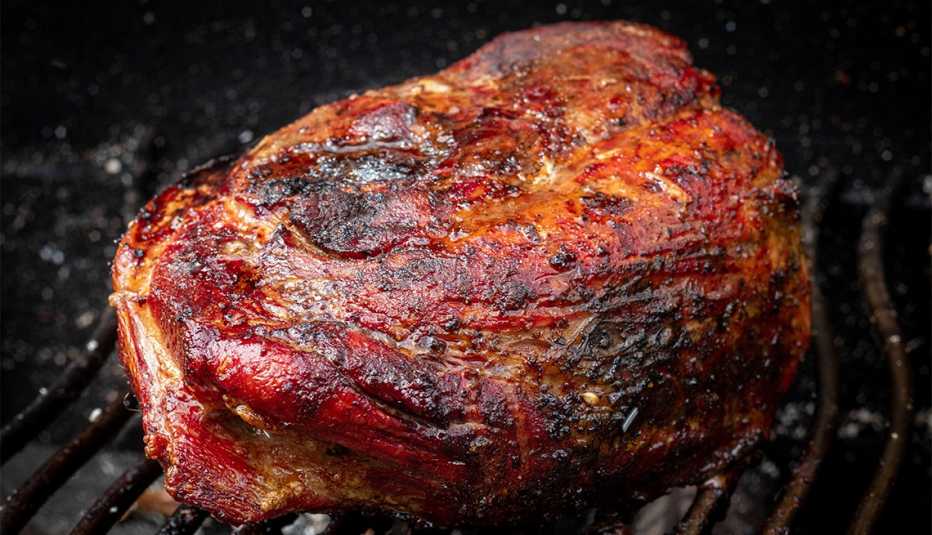Staying Fit


Everyone loves summer barbecues, but if you want to take your backyard feasts to the next level, try a rub to boost the flavor of meat, poultry, fish and vegetables.
These spice blends take very little time and effort to prepare and are made from what you probably have stashed away in your kitchen pantry. They impart big flavor in a mostly healthy way.


AARP Membership— $12 for your first year when you sign up for Automatic Renewal
Get instant access to members-only products and hundreds of discounts, a free second membership, and a subscription to AARP the Magazine.
Rubbed all over the outer surface of your food before it gets cooked, rubs traditionally mix salty and sweet ingredients and work to amp up the flavor while at the same time giving the meat an appealing outer crust.
The ABCs of rubs


Big Hoffa’s Pork Shoulder and Rib Rub
Adam Hoffman, pitmaster at Big Hoffa’s Smokehouse in Westfield, Indiana, suggests this classic rub.
Ingredients:
- 2 cups brown sugar
- 1 teaspoon black pepper
- 1 teaspoon kosher salt
- 1 teaspoon paprika
- 1 teaspoon garlic powder
- 1 teaspoon dry mustard
Instructions: Sprinkle or use a spray bottle to apply apple cider vinegar to a pork shoulder or ribs to moisten the meat. Blend rub ingredients together and apply to meat. Cook as directed according to weight and cut.
A general rule of thumb for how much rub to use is roughly two tablespoons per pound of meat. And if there’s leftover spice mix, don’t toss it. Store extra rub in an airtight jar for your next BBQ.
Dry rubs are generally the most versatile and work best when cooking low and slow in a barbecue or smoker. If you prefer high-heat grilling, your best bet is a simple seasoning of salt and pepper, since rubs made from other spices will burn over high heat. If you plan to use a slow cooker or a conventional oven, another option is to slather on a wet rub (a cross between a marinade and a dry rub made from oil, spices, and an acid like vinegar or citrus juice).
But remember, says Jinnie Coleman, owner of Clay’s House of Pig in Tupelo, Mississippi, that barbecue rubs should never be used as the primary flavor but rather as a flavor enhancer for your meat, fish or vegetables.
What foods work best with rubs?
Chicken is a “a neutral, mildly flavored meat which lends itself well to both rubs and smoke,” Coleman says. A good basic chicken rub starts with salt, pepper, paprika, garlic powder and onion powder, she says.
“For an additional herb, one may use a tiny smidgen of rubbed sage,” Coleman says. Instead of being a stickler for precise measurements, she suggests building your rub based on your personal preferences, tweaking ingredients to suit your palate.
After you apply the rub, you can place the chicken on the grill immediately to cook at 275 degrees for 90 minutes. Then slather it with a finishing sauce of ketchup, a dash of sugar and apple cider vinegar before cooking for another 20 minutes.
Certain meats are better off without rubs, says Adam Hoffman, pitmaster at Big Hoffa’s Smokehouse in Westfield, Indiana, who estimates that he’s cooked more than half a million briskets during his career.
If you’re grilling up any kind of steak, including flank or skirt steak, you’re better off just using a marinade of salt and pepper, he says, since the meat already has plenty of flavor that comes through on its own.

































































More on Home and Family
8 Foods You’re Storing Wrong in the Kitchen
Common mistakes can affect quality, shorten shelf life
Been a While Since You Hosted a Party? 7 Ideas to Get You Up to Speed
Social muscles may be a bit rusty, but this guide can helpOutdoor Games for Backyard Fun
Lure everyone off their devices with these fun-for-all activities